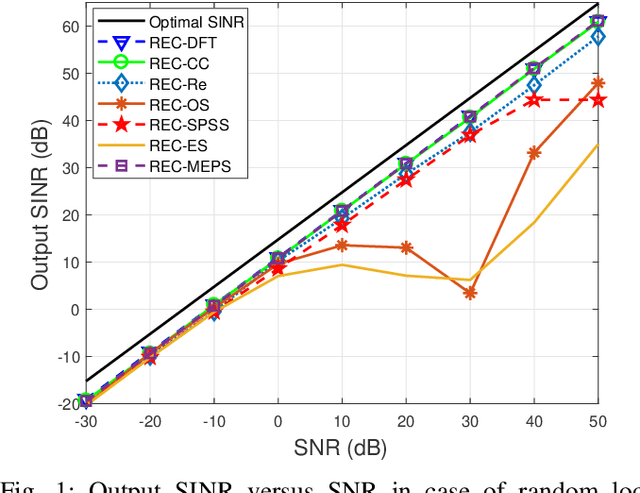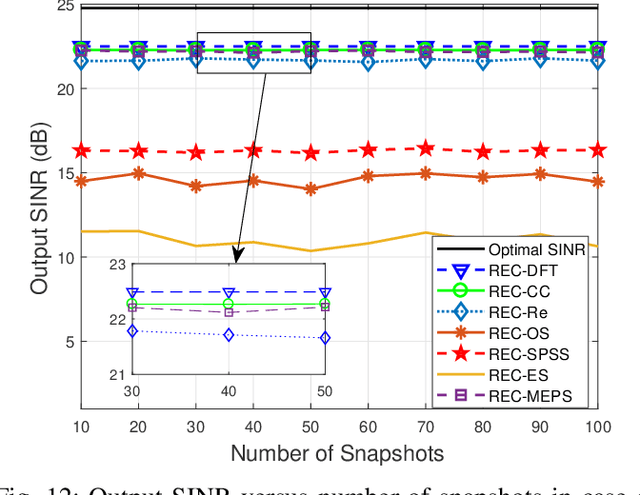Saeed Mohammadzadeh
Pilot and Data Power Control for Uplink Cell-free massive MIMO
Feb 26, 2025Abstract:This paper introduces a novel iterative algorithm for optimizing pilot and data power control (PC) in cell-free massive multiple-input multiple-output (CF-mMIMO) systems, aiming to enhance system performance under real-time channel conditions. The approach begins by deriving the signal-to-interference-plus-noise ratio (SINR) using a matched filtering receiver and formulating a min-max optimization problem to minimize the normalized mean square error (NMSE). Utilizing McCormick relaxation, the algorithm adjusts pilot power dynamically, ensuring efficient channel estimation. A subsequent max-min optimization problem allocates data power, balancing fairness and efficiency. The iterative process refines pilot and data power allocations based on updated channel state information (CSI) and NMSE results, optimizing spectral efficiency. By leveraging geometric programming (GP) for data power allocation, the proposed method achieves a robust trade-off between simplicity and performance, significantly improving system capacity and fairness. The simulation results demonstrate that dynamic adjustment of both pilot and data PC substantially enhances overall spectral efficiency and fairness, outperforming the existing schemes in the literature.
Investigating Deep Learning Model Calibration for Classification Problems in Mechanics
Dec 01, 2022Abstract:Recently, there has been a growing interest in applying machine learning methods to problems in engineering mechanics. In particular, there has been significant interest in applying deep learning techniques to predicting the mechanical behavior of heterogeneous materials and structures. Researchers have shown that deep learning methods are able to effectively predict mechanical behavior with low error for systems ranging from engineered composites, to geometrically complex metamaterials, to heterogeneous biological tissue. However, there has been comparatively little attention paid to deep learning model calibration, i.e., the match between predicted probabilities of outcomes and the true probabilities of outcomes. In this work, we perform a comprehensive investigation into ML model calibration across seven open access engineering mechanics datasets that cover three distinct types of mechanical problems. Specifically, we evaluate both model and model calibration error for multiple machine learning methods, and investigate the influence of ensemble averaging and post hoc model calibration via temperature scaling. Overall, we find that ensemble averaging of deep neural networks is both an effective and consistent tool for improving model calibration, while temperature scaling has comparatively limited benefits. Looking forward, we anticipate that this investigation will lay the foundation for future work in developing mechanics specific approaches to deep learning model calibration.
Enhancing Mechanical Metamodels with a Generative Model-Based Augmented Training Dataset
Mar 08, 2022



Abstract:Modeling biological soft tissue is complex in part due to material heterogeneity. Microstructural patterns, which play a major role in defining the mechanical behavior of these tissues, are both challenging to characterize, and difficult to simulate. Recently, machine learning-based methods to predict the mechanical behavior of heterogeneous materials have made it possible to more thoroughly explore the massive input parameter space associated with heterogeneous blocks of material. Specifically, we can train machine learning (ML) models to closely approximate computationally expensive heterogeneous material simulations where the ML model is trained on a dataset of simulations that capture the range of spatial heterogeneity present in the material of interest. However, when it comes to applying these techniques to biological tissue more broadly, there is a major limitation: the relevant microstructural patterns are both challenging to obtain and difficult to analyze. Consequently, the number of useful examples available to characterize the input domain under study is limited. In this work, we investigate the efficacy of ML-based generative models as a tool for augmenting limited input pattern datasets. We find that a Style-based Generative Adversarial Network with an adaptive discriminator augmentation mechanism is able to successfully leverage just 1,000 example patterns to create meaningful generated patterns that can be used as inputs to finite element simulations to augment the training dataset. To enable this methodological contribution, we have created an open access dataset of Finite Element Analysis simulations based on Cahn-Hilliard patterns. We anticipate that future researchers will be able to leverage this dataset and build on the work presented here.
Study of Robust Adaptive Beamforming Based on Low-Complexity DFT Spatial Sampling
Jun 23, 2021



Abstract:In this paper, a novel and robust algorithm is proposed for adaptive beamforming based on the idea of reconstructing the autocorrelation sequence (ACS) of a random process from a set of measured data. This is obtained from the first column and the first row of the sample covariance matrix (SCM) after averaging along its diagonals. Then, the power spectrum of the correlation sequence is estimated using the discrete Fourier transform (DFT). The DFT coefficients corresponding to the angles within the noise-plus-interference region are used to reconstruct the noise-plus-interference covariance matrix (NPICM), while the desired signal covariance matrix (DSCM) is estimated by identifying and removing the noise-plus-interference component from the SCM. In particular, the spatial power spectrum of the estimated received signal is utilized to compute the correlation sequence corresponding to the noise-plus-interference in which the dominant DFT coefficient of the noise-plus-interference is captured. A key advantage of the proposed adaptive beamforming is that only little prior information is required. Specifically, an imprecise knowledge of the array geometry and of the angular sectors in which the interferences are located is needed. Simulation results demonstrate that compared with previous reconstruction-based beamformers, the proposed approach can achieve better overall performance in the case of multiple mismatches over a very large range of input signal-to-noise ratios.
 Add to Chrome
Add to Chrome Add to Firefox
Add to Firefox Add to Edge
Add to Edge